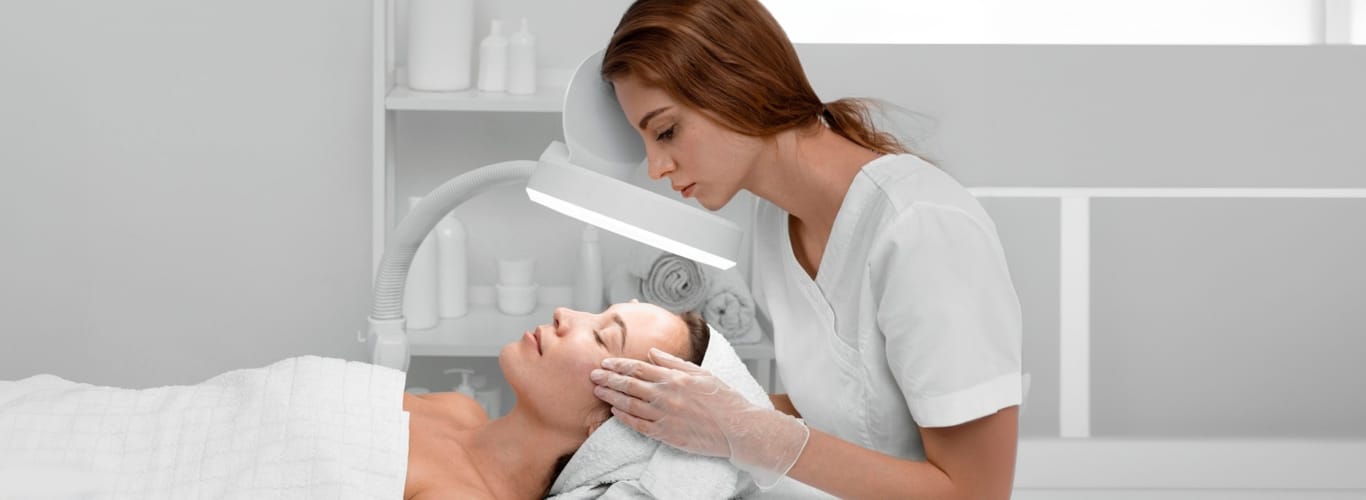How long does fibroblast results last?
Glowing skin is more than just a trend — it's a personal journey. Dive deep with me as I explore “how long does fibroblast last”, unraveling the intricacies of this revolutionary skincare procedure. From immediate after-effects to long-term results, I've gathered all the insights for your radiant ambitions. Let’s illuminate!
What is a fibroblast and how does it work?
Fibroblast is not a product but rather a specialized cell in our skin. Imagine it as the backstage crew in a Broadway show; you might not see them, but they're the ones setting the stage. Our skin's firmness and youthfulness owe a lot to these diligent workers, as they produce collagen and elastin, the star actors that keep our skin plump and tight.
The Plasma Fibroblast Therapy (also known as fibroblast treatment), on the other hand, is the real showstopper. Think of it as VIP treatment for our diligent backstage crew, ensuring they work at their absolute best.
This non-invasive procedure involves using a pen-like device that discharges a high-frequency electric current to small areas of the skin.
Here's a simplistic rundown:
- Zap! A tiny plasma flash, which is a minuscule lightning bolt, is emitted from the pen.
- Immediate response: this micro-injury stimulates our backstage crew (fibroblasts) to work overtime, producing more collagen and elastin.
- The outcome? A tighter, rejuvenated skin that sings notes of youth.
Imagine watching your favorite classic movie in HD. That's what this therapy aims to do for your skin — enhancing and refining. But remember, like any masterpiece, the results aren't just about the technique but also the canvas. Our skin's individual reactions can vary.
The magic of fibroblast is its ability to harness our body's natural processes to evoke beauty. It's not a fleeting trend; it's skincare science at its finest.
Keep clients coming back forever!
Want loyal clients who rave about your salon? Download our loyalty checklist to unlock 6 game-changing secrets that ensure clients keep returning.
Oh no! We couldn’t subscribe you ☹️
Done! We've sent a link to your Email 📨
How long does plasma fibroblast last?
Plasma Fibroblast Therapy is rapidly gaining acclaim in the beauty world, but as with any sought-after procedure, we're all keen to know: how long does fibroblast last? Let's dissect the timeline and understand its effects.
First fibroblast results immediately after the procedure
Upon receiving Plasma Fibroblast Therapy, you'll notice an immediate skin-tightening effect. The treatment area will be more defined, and there's a visible lift, signaling the beginning of the skin's rejuvenation process. However, be prepared for some initial redness and minor swelling – these are typical post-procedure reactions that will fade within a few days.
Your skin two months later
By the two-month mark, your skin's transformation is more evident. The initial reactions have subsided, and in their place, you'll find smoother, firmer skin. The increased collagen and elastin production, stimulated by the procedure, become prominent around this time. Wrinkles and fine lines appear softened, and there's a general plumpness to the skin's texture.
What happens to your skin over time
The beauty of Plasma Fibroblast Therapy doesn't stop at two months. With proper care, your skin continues to show signs of improvement and can retain the benefits for an extended period. Depending on individual factors, such as skin type, age, and lifestyle, the effects can last anywhere from three to five years. However, it's essential to maintain a good skincare routine and protect your skin from prolonged sun exposure to maximize these results.
Possible side effects of the procedure
Plasma Fibroblast Therapy, while a wonder-worker in the realm of skincare, is not without its quirks. Just as we embrace the glitz and glam of a stiletto heel but accept the occasional discomfort, understanding potential side effects of this treatment is essential. Here's your comprehensive guide to navigating the path of beauty with clarity and confidence.
Redness and swelling
The scoop: the most common immediate reaction, much like the rosy flush after a brisk walk or a spicy meal. The treated area might feel warm and look slightly inflamed.
Example: picture the natural blush after a jog – it's temporary and usually fades within a few days.
Tiny crusts or scabs
The scoop: as the skin begins its healing journey, you might notice tiny crusts or scab-like formations where the plasma pen touched. Don't be alarmed; they're just a sign of your skin working its magic.
Example: it's akin to how a minor scrape heals. The key? Avoid picking at them to prevent scarring.
Tingling or burning sensation
The scoop: some recipients describe a mild tingling or burning sensation post-procedure, almost like a sunburn. This usually subsides quickly and can be managed with over-the-counter pain relievers if necessary.
Hyperpigmentation or hypopigmentation
The scoop: changes in skin coloration can occur, especially if you're exposed to direct sunlight soon after the procedure. While rare, it's crucial to prioritize sun protection and consult your dermatologist if you notice uneven skin tone.
Example: think of how a tan might develop unevenly if sunscreen isn't adequately applied.
Potential for scarring
The scoop: In very rare instances, if aftercare instructions aren't followed or if there's an adverse reaction, minor scarring may occur.
Factors that can negatively impact the result of treatment
Certain elements might cast a shadow over the radiant results. Awareness is key, so let's delve into the factors you should be wary of:
- Sun exposure: post-treatment sunshine indulgence can disrupt the even tone of your skin. Shield yourself with a high SPF and consider a stylish sun hat as your beauty armor.
- Poor aftercare: overlooking the treatment's aftercare, such as picking at scabs or not keeping the area clean, can heighten risks like infections and scarring. Think of it as the fine print for a radiant outcome.
- Lifestyle choices: the likes of smoking and excessive alcohol consumption can put a damper on your skin's healing. A few healthier choices can make all the difference in amplifying your results.
In the realm of beauty, forewarned is forearmed. With these insights, you're set to enjoy the transformative effects of Plasma Fibroblast Therapy to the fullest.
Ways to prolong the positive effect of the procedure
Here are your go-to strategies to prolong the positive effect of the procedure:
- Sunscreen devotion: sun might be the ultimate Instagram filter, but post-treatment, it's not your skin's best friend. Daily SPF application ensures you're guarded against premature fading.
- Hydration station: drinking water and opting for moisturizing products aid in skin elasticity and radiance. Think of it as the daily sip of vitality your skin craves.
- Skincare rituals: gentle exfoliation and regular facials remove dead cells, allowing your skin to bask in its renewed glory.
- Balanced lifestyle: limiting alcohol, avoiding smoking, and a nutrient-rich diet can be as transformative as the procedure itself.
Cherish the newfound radiance and let these steps be your compass for long-lasting allure.
The bottom line: so how long does fibroblast last?
So, how long does plasma fibroblast last? On average, the stunning results of this procedure can dance on one's skin for about three to five years. But remember, its longevity is not merely a number. It's a duet between the procedure's brilliance and your post-treatment care. Factors like diligent sun protection, hydration, and a nurturing skincare routine play pivotal roles in sustaining that glow.
Also, individual variables—such as skin type, age, and even genetics—might make the symphony of effects unique to each person. So, while Plasma Fibroblast Therapy gifts a lasting allure, the notes of personal care craft its everlasting melody.
In essence? With the right care, your rejuvenated visage is here for a splendid encore.
 Elevate your glow with proven beauty secrets
Elevate your glow with proven beauty secrets
Dive in now for the latest beauty hacks, expert-approved tips, and transformative routines!
Oh no! We couldn’t subscribe you ☹️
Done! You've subscribed 💛
Unsubscribe anytime. Your data is stored for business-to-business communication purposes. See our Privacy policy.
Frequently asked questions
Are fibroblast results permanent?
No, fibroblast results are not permanent. The effects generally last between three to five years, depending on factors like age, skin type, and aftercare routine.
Is the duration of fibroblast results the same for everyone?
No, the duration varies based on individual factors like skin type, age, lifestyle choices, and adherence to post-treatment care.
Can I expect immediate results from a fibroblast treatment?
Yes, you'll notice immediate tightening and lifting, but full results unfold over a few months as collagen production ramps up.
Do fibroblast results require maintenance or touch-up sessions?
While the treatment has long-lasting effects, maintenance or touch-up sessions may be needed, particularly for areas prone to faster aging.
Can sun exposure affect fibroblast results?
Absolutely. Sun exposure can lead to uneven pigmentation and potentially shorten the lifespan of your fibroblast results. SPF is a must.
Last updated on Sep 18, 2023
“What Changed” in this article? Everything. It's packed with the latest findings, the ripest data, and a fresh analysis you won't find anywhere else.
A subject-matter expert wrote the content, and reliable, official sources support it. Recent research has been incorporated to maintain relevancy and accuracy.
Key sources and research references: aocd and naomedical
Please share this post
Table of Contents
What is a fibroblast and how does it work?How long does plasma fibroblast last?First fibroblast results immediately after the procedureYour skin two months laterWhat happens to your skin over timePossible side effects of the procedureRedness and swellingTiny crusts or scabsTingling or burning sensationHyperpigmentation or hypopigmentationPotential for scarringFactors that can negatively impact the result of treatmentWays to prolong the positive effect of the procedureThe bottom line: so how long does fibroblast last?Frequently asked questionsHow much does a cosmetologist make | Average cosmetology salary
Are you interested in a career in cosmetology and want to know how much cosmetologists make? Check out our article to learn about the average cosmetology salary and the factors that determine it.
Carreer in beauty business
8 min
The role of vitamins in modern cosmetics
Ever wondered if natural Vitamin C is better than synthetic ascorbic acid? Or why synthetic Vitamin E is so common in skincare? This article explains the real differences, benefits, and myths about vitamins in cosmetics — so you can choose wisely.
Chemistry of beauty
11 min
Attract, retain, and delight: a guide to building your salon clientele
Today, simply offering quality services isn't enough. This guide explores data-driven personalization, silent appointments, eco-friendly practices, and more to help you elevate your client experience and build lasting loyalty.
Salon marketing
8 min
Unlock the secrets to beauty business success!
Join our community for insider tips on product management, marketing, sales and client attraction. Elevate your business with expert insights delivered straight to your inbox.
Oh no! We couldn’t subscribe you ☹️
Done! You've subscribed 💛
Trusted by the best in the beauty industry.
Transform your beauty business with Suplery!
Already enjoying our expert tips? Take the next step and join Suplery to revolutionize your business operations.
Huge range of professional products
One-click checkout after first order
Automated predictive orders
Seamless inventory management
From words to action
Start working with Suplery and explore all the tools and services you need to expand your business
Get started with Suplery24/7 Support
Secure payments
Designed by industry’s experts






